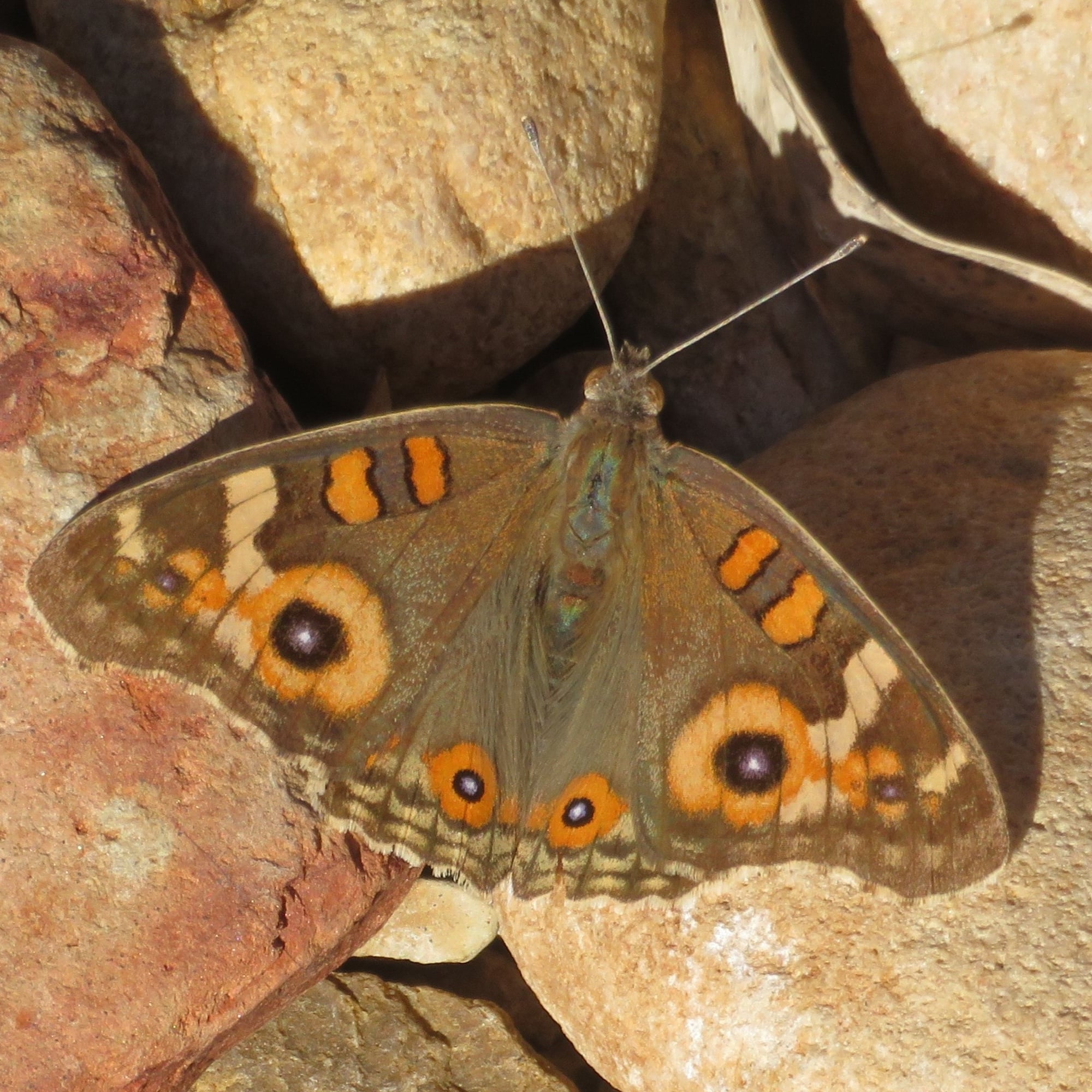The creature challenge for readers this month is to identify the moth or butterfly in Ann’s excellent photo from the Gammon Ranges. For the moment, it could be either a butterfly OR moth – see below!

Butterflies and moths differ in their wings, antennae, body shape, activity patterns, and how they transform from larva to adult.
Wings
- Butterflies: Generally have wings that are folded vertically over their bodies when resting
- Moths: Generally have wings that are spread flat while resting
Colour
- Butterflies are generally more colourful with bright colours
- Moths are generally drab
Antennae
- Butterflies: Have thin, straight antennae with bulb- or club-shaped tips
- Moths: Have comb-shaped, leaf-shaped, or feather-shaped antennae which end in a point
Body shape
- Butterflies: Have slender, smooth bodies
- Moths: Have stockier, furry bodies larger by comparison with their wings
Activity patterns
- Butterflies: Primarily fly during the daytime
- Moths: Generally fly and are active at night
Transformation
- Butterflies: Form an exposed pupa made from a hardened protein, called a chrysalis
- Moths: Spin a cocoon made of silk within which they metamorphose into the pupal stage
While there are many differences between butterflies and moths, there are also many exceptions to the rules. For example, some butterflies and moths have similar-shaped antennae. Some moths, like Urania leilus have bright colours and fly during the day.
So do you have the answer? Leave a comment below and we’ll publish the answer in the next edition.
Source material courtesy of the Australian Butterfly Sanctuary. Thanks to Ann and Arthur Ward for their kind assistance.
Next read: From the archive: Round the Pound

Comments (0)